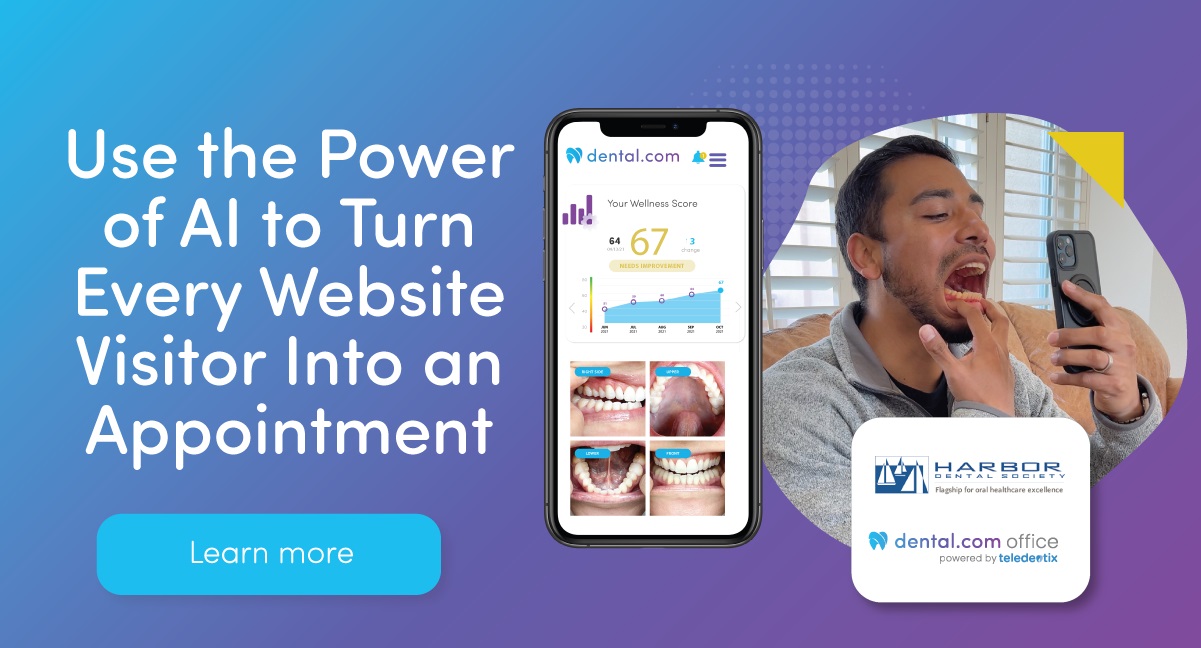Wednesday, Jul 7, 2021
The dust is settling and we are seeing the dental industry re-emerge from the pandemic. According to a recent Becker’s healthcare study, the dental industry is projected to almost double from $15.57B in 2020 to $30.58b in seven years. Many practices have the desire to take on the pent-up demand, but most are hindered by an ongoing challenge that plagued the industry even prior to COVID. That challenge is the ability to find and retain great team members. Fortunately, in the wake of crisis, opportunities and tools have come to center stage and now viewed in a different light. These are discussed below.
Changing Workforce Composition: The Rise of a Hybrid Model and Fractional Staffing
The pandemic’s impact on the workforce was significant. The ability to access childcare options and the immediate shift to remote only options for schools, impacted many team members’ ability to return to work once the office re-opened. In addition, we saw many that were fearful to return to an industry tagged by the media as one of the riskiest places to work. Some decided not to come back until a later time and others simply were turned off by the new way dentistry had to operate. The unemployment stipend also had variable affects with unintended consequences like creating a disincentive to return to work as soon as the practice was able. Overall, the pandemic exacerbated an already stressed dental staffing environment.
As a result, many practices were more open and, in some cases, forced to consider new approaches to fill their staffing needs. One of these models was the use of a hybrid team. While the use of off-site teams is not new by any means - many practices use them for coaching, accounting, and legal for example - the use of virtual teams to handle everyday tasks like billing, hygiene recare or answering phones has been limited. There are some important advantages that this model offers. First, the use of a hybrid model creates access to an entirely new pool of talent. By being open to an off-site team, practices can fill talent and skillset gaps, reduce the heavily reliance on local talent and ameliorate disruptions in staffing changes. This model can provide a competitive advantage and allow practices to tap into resources they may not normally have access too. It is also worth mentioning the rise and acceptance of off-site team members within the industry creates new opportunities for those in the field to share their talent across geographies. This rise in remote workers is a growing trend not only in dentistry, but across all industries.
Off-site teams also allow doctors to utilize a fractional staffing approach to filling positions. Rather than hire a full-time employee, fractional staffing gives doctors the option to contract with someone for that “just right” amount of part-time assistance to complete a task. This Goldilocks staffing model approach is transformative in allowing doctors to tap into resources as they need it, minimizing unnecessary overhead.
Use of an off-site team also allows the in-office team to focus on tasks that need to be done in the office, reducing the need to multi-task which often leads to stress, burnout and staff turnover. Companies like Swiss Monkey are offering a fully integrated solution for private practices. Doctors can re-engineer their operations and tap into economies of scale usually reserved for larger corporations. As doctors explore these options, other considerations like workstation availability, security protocols, internet speeds and workload allocation (i.e., determining what tasks stay in-house vs. off-site) should be fully discussed.
Emergence of New Tech and the Age of Digital Transformation
We are seeing the Renaissance of new tools come into the dental industry. In addition, the growing shift to the cloud is having profound effects on the field. New tech continues to emerge that can help an office digitize workflows and create more efficient systems. Tasks that often take hours to complete such as identifying and communicating with patients are being done with just a few clicks.
We will continue to see these technologies get better and more integrated over the years, creating a different type of practice then we saw just a decade ago. Modern practices will be built around a more robust data architecture, allowing it to deliver better, faster and more personalized experiences. This shift toward data aggregation and data warehouses can also lead to changes on the population health level in addition to the patient-level.
What does this mean for the current workforce?
While we are seeing rapid and exciting progress on the technology front, it will be the integration of these tools with one another that will be key to extracting the value they promise to deliver. Currently, we are seeing the sedimentation of different layers of technology in a practice. We often see practices buying not one, but two, three or sometimes more different products. The challenge for practices will be in how to leverage these tools so they can maximize their value and minimize “technology bloat”. In some cases, only a fraction of the features are being used. Team members are often overwhelmed with the current tasks in the office and not able to incorporate yet another “thing to check or manage.” In addition, while technology can be better at sifting and analyzing massive amounts of data (e.g., helping prioritize which patients should be contacted) some of the tools are still not sophisticated enough to catch certain things that more experienced team members still need to do (e.g., check frequencies or downgrades for certain procedures). As offices decide to integrate these new technologies into their practices, offices will want to allocate a team member – on or off-site to help oversee its use. After all, these tools are just that - tools. If you do not use them, they cannot provide the potential value they promise. Secondly, remember the old adage, “Garbage in, garbage out.” If the data inputted is inaccurate or incomplete, the quality and integrity of their reports provide limited value.
Another interesting consequence of hybrid teams and technology is also the democratization of dental practices. The ability to start or a run practice is also heavily dependent on the ability to attract, hire and retain on-site team members. With the ability to leverage off-site teams and the use of technology, offices that may not typically be able to operate, now have the resources to do so. Though the day-to-day mechanics may be different, the possibility is now more real. This is particularly interesting to those in areas that have a high cost of living where finding staff who can afford to live in the area is scarce, rural areas or regions where staffing is particularly challenging.
The Elephant in the Room
There is certain fear that the rise of technology and the growing use of off-site teams will completely replace the front desk team. While that is certainly understandable, that future seems distant at best. In fact, it can be argued that this paradigm shift in practice operations is singularly focused on allowing an on-site team to do their work better and more efficiently. There is no technology that can replace the sense of empathy and trust built between two people, particularly between a provider and patient. In healthcare, fidelity to that principle is paramount. It is what makes our field unique.
So, in effect, technology and virtual models will emphasize the need for even better and more honed human interaction. It will allow our on-site team members to focus on developing and delivering a better experience by eliminating the time they are spending on rote tasks or activities that can be shifted to either an off-site team or facilitated by technology. In addition, doctors can focus on investing in training their teams to learn more specialized skills like case presentation or how to deliver an exceptional patient experience. When a doctor can manage staff turnover and create a more stable infrastructure, they are able to invest more of their time and energy to growing their practice.
The practice of the future will be built on a robust data architecture integrating data across the practice, use a blend of local and off-site talent, utilize smart technology and have more specialized on-site team members to deliver an even better patient experience. Practices that embrace these new resources will position themselves to prepare for the new generation of healthcare consumers, be better equipped to compete with a rise in DSO-supported offices and create a more durable and profitable practice.
Christine Sison is the CEO of Swiss Monkey, a staffing and virtual front office services company. She has built and has managed a dental practice for over 10 years and has her Bachelors in Neurobiology from UC Berkeley and a Master’s in Health Policy and Management from the Harvard School of Public Health. Prior to her work in dentistry, she conducted brain tumor research at UCSF, assisted in the integration of IT into clinics and hospitals, and later led the development of community-wide healthcare systems, including telemedicine efforts. Want to learn more about a hybrid work model? Contact Swiss Monkey at 916-500-4125 or christine@swissmonkey.io.







